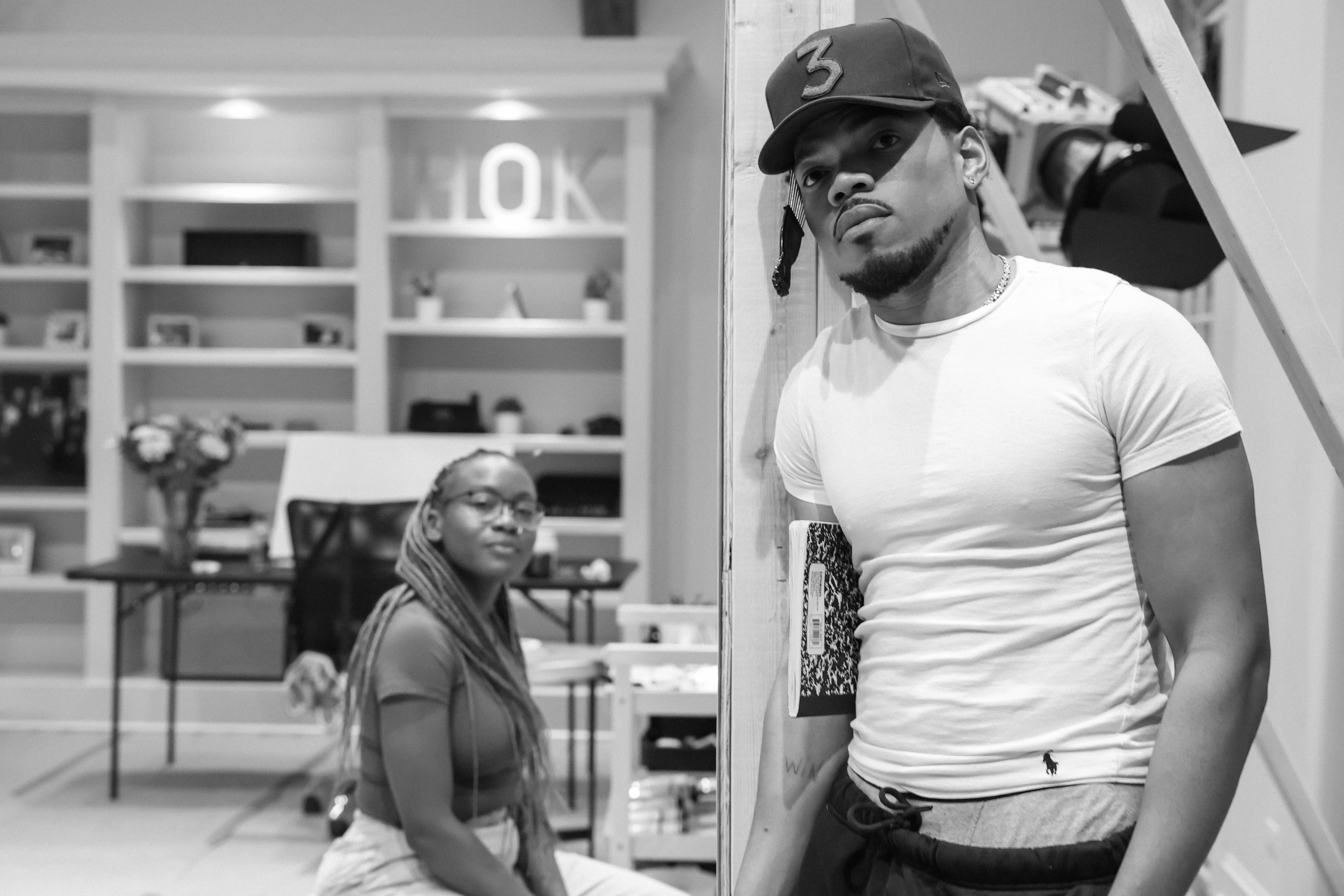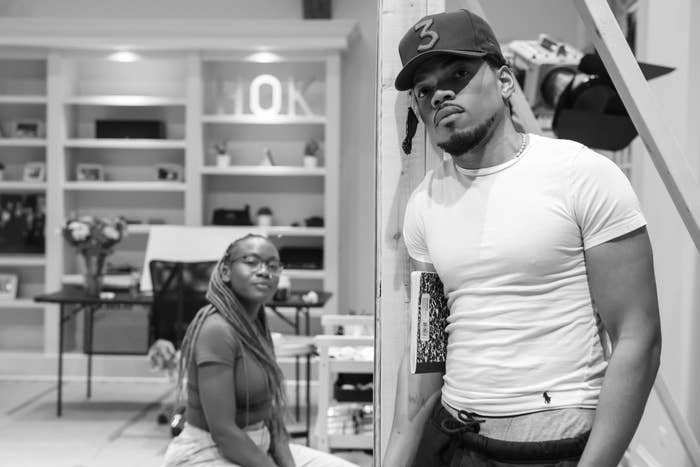
“It’s good to be back and know who I am,” Chance the Rapper tells Complex, following the private opening of his “Child of God” art exhibition with Naïla Opiangah at the Museum of Contemporary Art in Chicago this week.
A common misconception about the 28-year-old rapper and father of two, though, is that he forgot who he was in the first place. In reality, Chance has only settled deeper into himself over the past few years. Now, he’s reemerging as an artist who accepts that he’s still affected by negativity, but is no longer afraid of being misunderstood.
At the beginning of 2022, the Chicago rapper embarked on a pilgrimage to Ghana, where he reconnected with his Blackness, discovered deep familial roots, and met people who would ultimately help shape the creative approach for his next project. One of those people was Naïla Opiangah, a talented Gabonese painter who was working out of legendary Ghanian artist Amoako Boafo’s studio at the time. The two connected instantly, and Chance decided he wanted her to be involved in one of his most ambitious creative endeavors to date.
“Child of God” is Chance’s first solo release in over a year, doubling as a contemporary art exhibit. It also marks the beginning of a new chapter for Chance the Rapper. His music has been steadily evolving since the release of his last studio album, The Big Day, and so have his visuals. He has always loved film, but by leading the cinematography for “Child of God,” Chance is now putting his filmmaking skills on full display, and creating a “new visual language” that places more emphasis on the words he’s spitting.
“Even though it makes me more vulnerable and it does put a lot of emphasis on what I’m saying, I feel like that’s what I have to offer the most right now,” he explains. “I feel like I’ve given a lot of Chance, and I’m still giving a lot of Chance, but now I’m trying to give a little more of ‘The Rapper,’ and let people get what they’re coming for, which is my words.”
Throughout the “Child of God” music video, we see Naïla’s painting being created. She says the illustration of naked Black women gathered together was an idea she came up with after listening to the song and sketching what came to mind. Naïla reveals that the prospect of drawing naked Black women intimidated her at first, because she felt embarrassed, but it wasn’t until she questioned and explored those feelings that the piece fully bloomed.
It all culminates in a song and video that exude a sense of confidence that Chance has worked hard to regain. “Child of God” has the kind of poise and self-assuredness that he believes would make his high school self proud, and the song arrives a little over a week before the 10-year anniversary of Chance’s 10 Day mixtape. He’s been doing a lot of reflecting on the project in the days leading up to the anniversary, and he believes the new music he’s preparing to release demonstrates how much he has grown as a person since his time suspended from school.
“If I was able to see my old self that had just dropped his first mixtape with the head in the clouds, and got Illroots—which was the biggest deal in the world at that time—and traveled to SXSW by himself on a train at 18 for 26 hours when I had never traveled anywhere else in the world by myself, I’m proud of that kid. I think that kid is proud of me, too.”
Following the release of “Child of God,” Complex spoke with Chance the Rapper and Naïla Opiangah about blending their creative processes to make the song and accompanying art, how Chance’s trip to Ghana impacted his life and music, and what’s been guiding him in the creation of his next project.
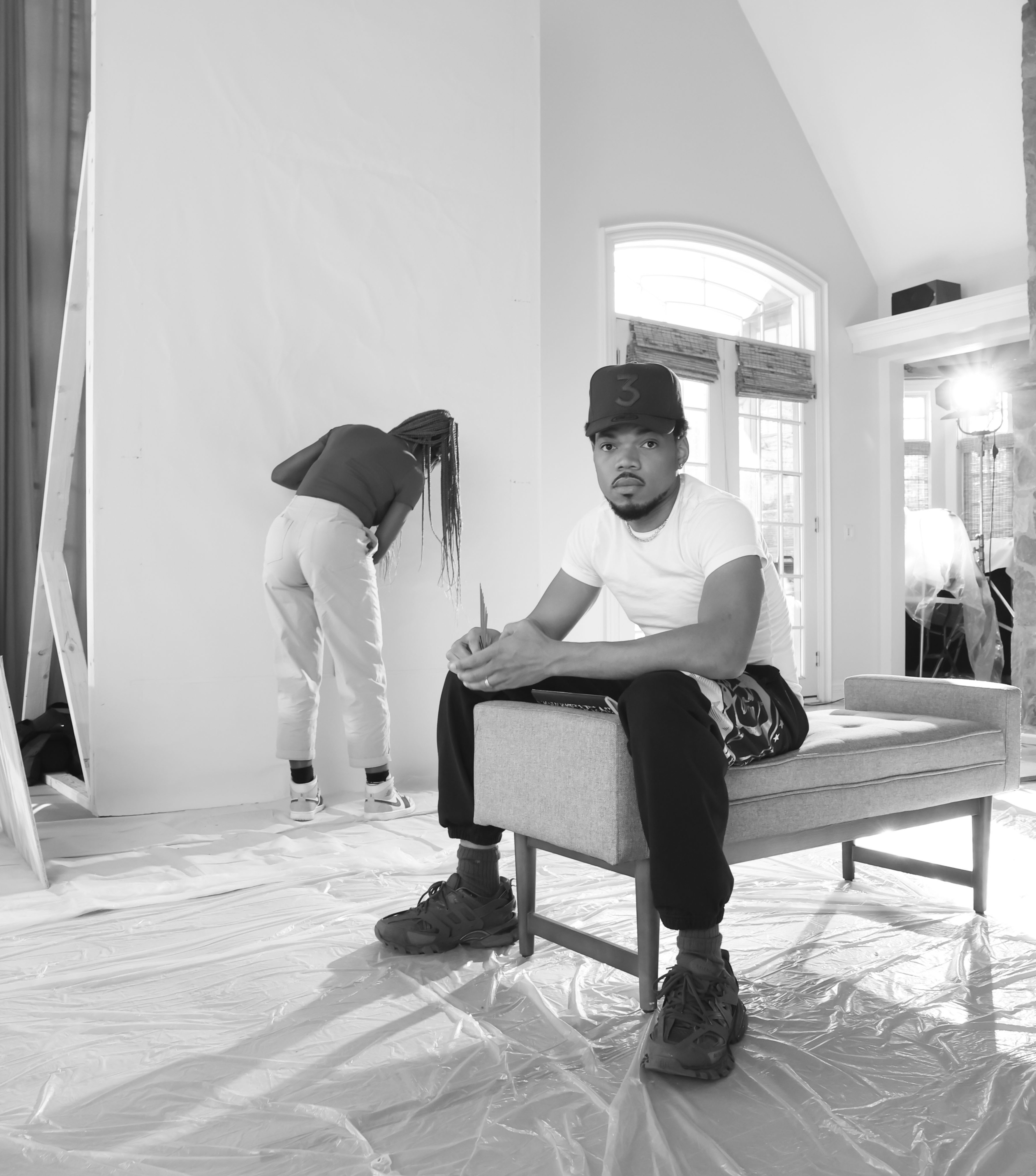
The “Child of God” art exhibition just opened in Chicago’s Museum of Contemporary Art. What has this experience been like for both of you?
Naïla Opiangah: Exhilarating! It’s been very strange and very great. I don’t have a background in entertainment, and I’m not used to showcasing work or being in a setting like that where I’m the center of attention at this scale, so it was very mind-blowing. But I also felt so happy and joyful to see not just my family and friends being supportive, but also all these strangers being so receptive to the work. Most importantly, I was really happy to see the joy on Chance’s face, because this project has been very intense, and I was happy for him to be able to do that. It was also about him getting out of his comfort zone; this is something very different from what he’s done before. It turned out even better than we expected.
Chance the Rapper: For me, it was very surreal, similar to what Naïla was saying. It’s good to be back and know who I am. The event last night was so dope. We did a private opening for the piece and an unveiling. It was very beautiful. There was a full black string quartet, wined and dined. It was at the MCA, which is already pinkies up. I got my mom, dad, grandmother, little cousins, and the people that I grew up going to open mics with that I haven’t seen in ten years. Classmates from third grade were there. The biggest art collectors, dealers, and people in the art world were there. And some of the biggest hip-hop artists in the world [showed up]—all there to come support me and see me do what I do. Anybody can become discouraged or forget what they do, and there’s something that’s just so… I don’t even know the right word for it. It took me back to my open mic days.
I don’t have to tell you this, but I’m independent and my first fans didn’t come from a music video or a feature. My first fans came from me going to the same open mic, week after week, getting better and better at my pieces until some people were like, “I’m coming to the open mic just to see what you’re doing this week.” Eventually, I got my first show and sold all of my tickets out of the library of my open mic. I created a community around my art, with people who respected it and wanted to enjoy it in a very organic and supportive way. They felt like this was something that they were invested in; we were just a bunch of kids at the time.
It was great to see all those people again last night, to watch them stand around and watch Naïla and my piece, and watch the video and listen to the song. [It was great to] take in this conversation that we were trying to have about confidence, realizing who you are, and getting back out there; and finally having a finished product and new piece to show everybody. I saw people crying and being emotionally affected in the space—you’re supposed to go to the museum and cry. You’re supposed to listen to music and cry. That’s not what’s always presented, and so to be in such a pure space and pure form of collaboration with Naïla, where there is no gallery involved—no agent or manager or label, it’s just me and her making something to say something—there’s nothing like that.
Naïla, what was it like creating this art piece live on set while the music video was being shot? Was there any added pressure you put on yourself?
Naïla: Well, the music was on, and I just focused on not hearing or seeing anything else. [Laughs.] But more seriously, my background is in architecture. I studied architecture at the Illinois Institute of Technology, which is significant because Virgil Abloh went to the same program. He got a Masters in Architecture there. That is something that always comes back to me and makes me emotional. That being said, in architecture education, it’s kind of similar to art education. You build projects and models and present them regularly. You’re used to getting your work critiqued, and you’re used to working in a setting where people see your process. My school, [S.R.] Crown Hall, which is this architectural landmark, is basically a glass box where all the tables are just there, and everything that you’re doing can be seen. So I’m really used to being observed when I work. Now, when it comes to this particular piece, I had to take some time to give birth to the visual form of what I saw in my mind when I listened to the song. I had to take some time. But right before I got to Chicago, it was on the plane that I gave birth to 80 percent of the idea of the painting. When I arrived, I was so excited and happy that I figured it out, that I sketched it, showed it to Chance, and couldn’t wait to get it done. I was still shocked to see how many people were needed to put together a music video. But I really didn’t notice them because when I was focused, I was not bothered at all.
“That’s the goal of this whole next project: to be in collaboration with artists and creatives and have these conversations from top to bottom.” – Chance the Rapper
Chance, I know you’ve been behind the camera before. From your film The Magnificent Coloring World to directing the video for your track “The Heart & the Tongue,” your bag is slept on. What filmmaking skills have you picked up along the way, and how did they influence your approach to this video?
Chance: I appreciate you saying that! I have been on this filmmaking journey for a little while. Since 2020, I really got back into it and started reading again and watching my video essays, and trying to get better behind the camera. Directing is something that I’ve taken really closely, just because I’m a big overseeing presence. I have a vision for what I want to do, but I work with professionals in different departments. That’s what a director does—they translate the script to the actors and work on staging, but they also work with every department to make sure that their vision comes to life. On this video in particular, I stepped back. This video is actually directed by one of my best friends. His name is Troy Gueno. He worked with me on “The Heart & The Tongue” video, and he’s behind the camera on a lot of stuff. This one was actually my first time being a cinematographer. I was the director of cinematography for this one and my main focus was composition.
I’m trying to develop this new visual language where I’m focusing these new videos on the words, so the subject of all my videos are the words that I’m saying. Most videos have an A story and a B story. There’s usually a main performance shot, maybe a secondary performance shot, and then everything else is B-roll and inserts. And the subject is usually the rapper, so they don’t have as many performance shots in those music videos as they used to. What I’m trying to do is, even though it makes me more vulnerable and it does put a lot of emphasis on what I’m saying, I feel like that’s what I have to offer the most right now. I feel like I’ve given a lot of Chance, and I’m still giving a lot of Chance, but now I’m trying to give a little more of “The Rapper” and let people get what they’re coming for, which is my words. Because a part of this new visual style is making the subject the words, I have to focus on the composition of the shots.
All of the shots are either super wides, maybe one or two medium shots, and then a lot of super close-ups. In the performance shots, I’m focusing on delineating the secondary subject—my mouth or my body—being somewhere to the left or right of the frame or underneath the text. I actually did this thing on the set where I’m working with different operators to capture what I’m doing, but I can’t necessarily be looking at a monitor while I’m performing, because it might be in the shot. So I printed out a little graph of six boxes to make up the composition of the frame, and then just tape one word at the center of it and place it on all the monitors. So whenever the operator was looking at me, if my face was covering up the words, they knew where to keep the camera at. It was funny that composition ended up being the biggest part of this video because this was the first time that you see my composition notebook in one of the shots. It all just became this super cool and meta thing that I got to create with Naïla.
That’s the goal of this whole next project: to be in collaboration with artists and creatives and have these conversations from top to bottom. On “Child of God,” I had written the verses and the hook before I actually got to Naïla. I even recorded those before I got to her, but I was still able to be in the creative process with her, because I was shooting a whole video with her while she was painting. So I could have these little moments of creativity with the video while she was being creative, and that was a really freeing and dope thing for me. I’m so glad you asked me that. No one ever wants to ask me about the film stuff, but I actually know what I’m doing.
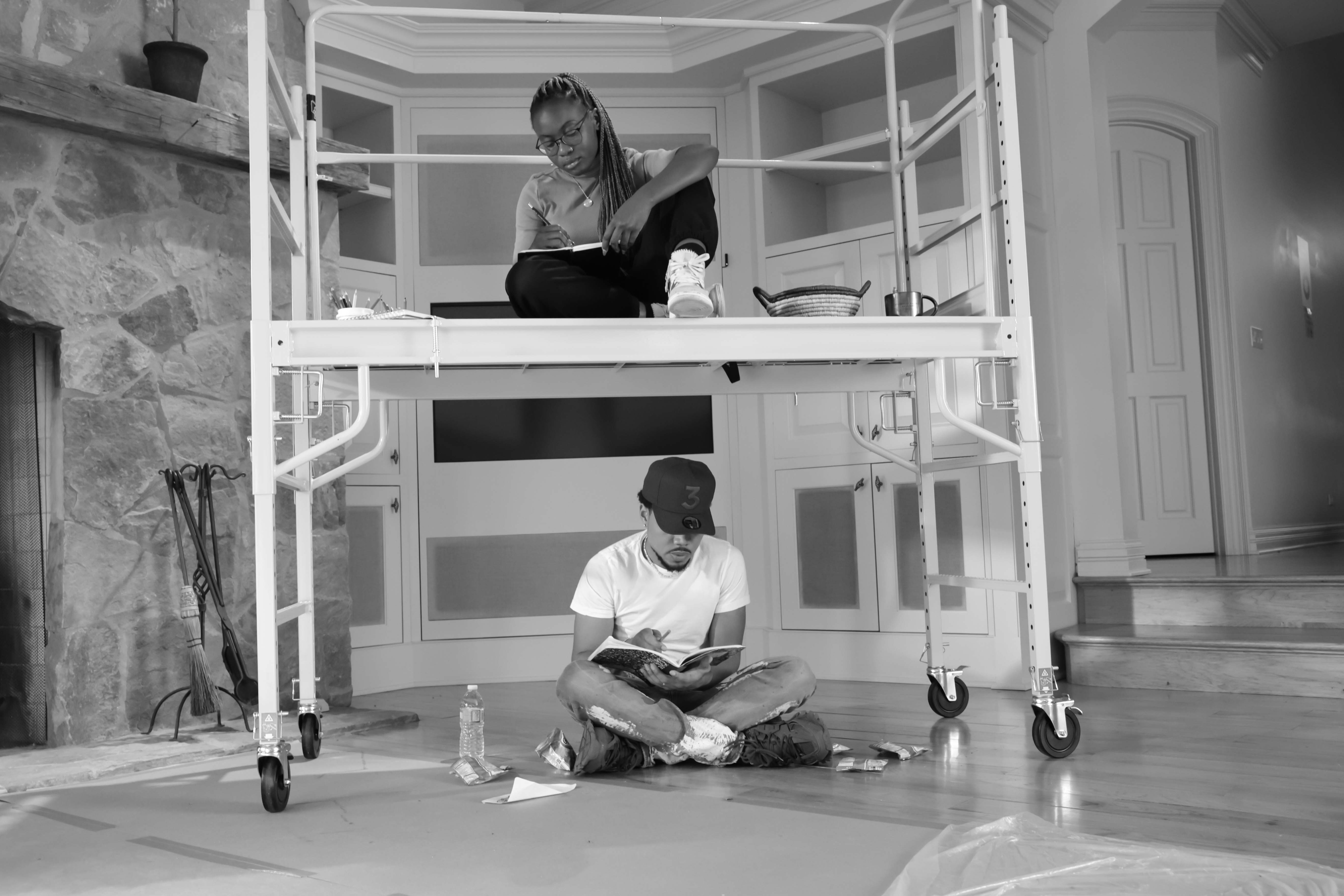
Ghana feels like it’s at the backdrop of all of this. Naïla, how did Ghanian culture influence this piece? And Chance, how did that trip impact you?
Naïla: I went to Ghana for the first time last year in January. My closest friend in the arts and my mentor is Amoako Boafo. He is a very successful Ghanian painter. The studio space where I’m working at is a part of an informal residency that he created. That being said, I first went there for an architecture project that I thought would be quick. But then I got there, and there’s just something about it. I really enjoyed the peace and how functional things are.
Chance: It was a life-changing trip. I actually only had been to the continent once before. I went to Johannesburg and had an amazing concert there, but it’s a vastly different culture. Ghana is very celebratory of Blackness and global Blackness. They’re probably the most progressive, forward-thinking, and responsible state in terms of the progression of Black folks and creating community in Black folks, which is something I didn’t really know much about. But a couple of days before I went out, I had a conversation with my grandmother, and I’m not sure why she never told me this, but she randomly told me a few days before I left that my great great grandfather was a part of the UNIA [The Universal Negro Improvement Association] and he was a Garveyist. He owned a laundromat service that was a part of Garvey’s network, and then I found out the day before I got on the plane that my great grandmother funded and built the first Church of God in Ghana. Afterward, she built two schools that my grandparents and cousins and uncles and aunts all actually traveled to Ghana to build with their hands. I think being raised in the public school system in Chicago, we get taught a little bit about slavery, and that’s the biggest context we have for our relationship with Africa. But to find out that I had recent blood that walked on the same streets as me in a country that felt foreign to me at first changed my whole perspective.
“Ghana changed my whole outlook on my relationship to my Blackness, and it gave me one of my most valued pieces of art in this relationship I’ve developed with Naïla.” – Chance the Rapper
I came to learn a lot more about Garvey, but once I got there, I learned a whole lot about Kwame Nkrumah, who was the first president. He liberated Ghana in 1957, named the country, and created the flag as a means to promote unity and Pan-Africanism around the world. When I got out there, the love and support I was met with was something that I had never experienced in my life in any other country.
I met Naïla the day that I got into town. I had been thinking about doing an art project with music for a while, and some friends brought me to Amoako Boafo’s studio. He’s a very big deal right now in contemporary art. He opened up his studio space to us and I met all these amazing artists, and Naïla specifically took me, Vic [Mensa], and the rest of our friends in. She took us on tours around the city, out to clubs, and took us to this amazing Black woman-owned restaurant. She really hosted us, and she’s not even from Ghana, but the entire collective was very inseparable while we were out there and I feel like that’s something in itself that I wasn’t used to.
I think Ghana is the backdrop for most of the things that we’re doing, not just because it’s on the continent, but because it’s the capital of Blackness on the continent, to me. I feel like it’s a country that’s founded in creating connectivity of Blackness around the world. It changed my whole outlook on my relationship to my Blackness, and it gave me one of my most valued pieces of art in this relationship I’ve developed with Naïla.
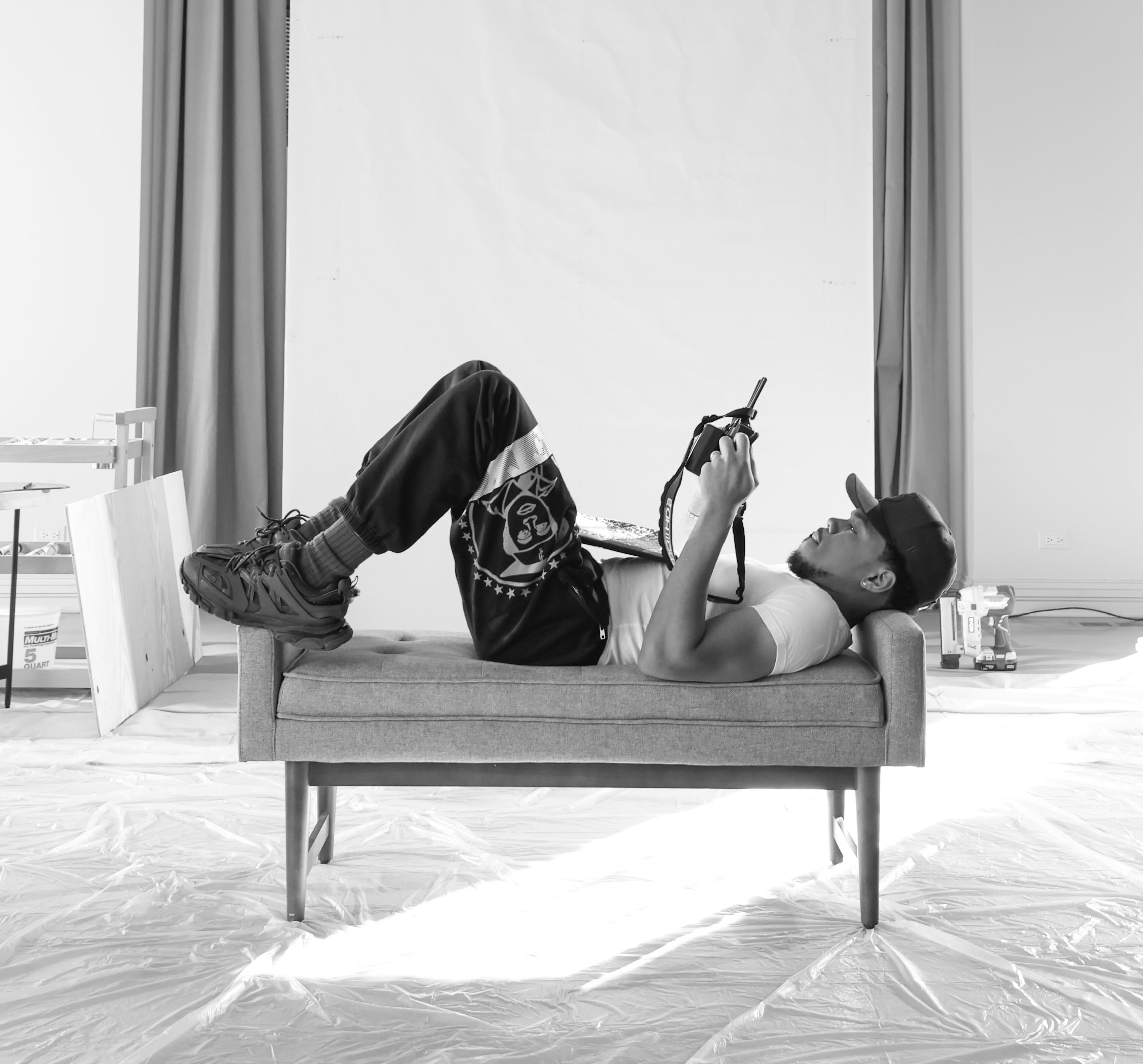
Shifting gears a little, 10 Day turns ten years old on April 3. When you look back at that time, how do you think your high school self would react to the music you’re getting ready to release now?
Chance: I was actually thinking a lot about that yesterday, because there were so many people that I hadn’t seen since high school. My dean of discipline and my high school art teacher both came last night. I’m still very close with my dean of discipline—I spent a lot of time in her office when I was in high school. We have a great relationship, and she was the reason why I got suspended instead of getting expelled. I think me from 10 years ago would come and give me a big ’ol hug. I think he’d say, “Thank you,” and I think he’d say, “I knew it.”
There’s a poem that I wrote that was a writing exercise. I’ve been doing a lot of writing exercises with Vic together, and recording some of them. One of the ones that we did was writing letters from different perspectives, and that being the most “something” of yourself. I can’t really describe it, but I had a piece where it was from my inner child to my most critical self. The inner child says, “I want to be just like you,” and the most critical self says, “I used to be just like you.” I can’t remember the rest, but that main line is something that I feel like I broke away from right before I made “Child of God.” It was a moment where I was questioning myself and forgetting that in 10 years I’ve done things that I could only do if I was making the right choices. I think if my old self was able to see that he had just dropped his first mixtape with the head in the clouds and got Illroots, which was the biggest deal in the world at that time, and traveled to SXSW by himself on a train at 18 for 26 hours when he had never traveled anywhere else in the world by myself, I’m proud of that kid. I think that kid is proud of me, too.
“I’m really just creating to say what I gotta say, and I think that in itself is what’s going to eventually lead me to the place where I don’t give a f*ck about any opinions. I still care, but I’m phasing it out very soon.” – Chance the Rapper
The last verse on “Child of God” sounds dedicated to refuting the naysayers and negative comments. Chance, would you say you’re at a point where you can ignore the negativity?
Chance: It still affects me very much. I’m still very affected, and much more than I should be. But whenever I write a song, even if I don’t get it figured out at the end, I take time to figure out what my perspective was. Who was I speaking to? And who was I speaking as sometimes? When I finished this song, I thought about the voice in my head that’s repeating, “Just do your thing, child.”
The whole hook is about realizing that there’s been times when you thought you wouldn’t survive before. There’s been days where you woke up and felt like there’s no way you’re getting through it, and the fact that you’re still here, the fact that you showed up is a testament. This world will make you second guess your first mind. Remember when it was your first day the first time? I think about that shit, like my first day at kindergarten. I remember it very vividly. I was terrified and watching my mom walk out, and I just knew I was going to die. I thought I wasn’t going to make it in this new school, and I don’t remember how that day ended, but I know that I’m alive now. So there’s been a ton of times where I’ve had a paralyzing fear that I thought I wouldn’t be able to show up as my full self, and in each one of those times, I’ve made it out alive.
There’s a voice that’s telling you to get through it, and that voice is really God. Who is telling you to do your thing, child? It reminds me of my mom’s voice. She used to tell me that, but my mom also taught me that I’m a child of God, and that we all are. And we recognize that it doesn’t matter what someone on Twitter says, it doesn’t matter what your mom and dad say, best friend, or anyone. If God is giving you purpose and telling you that this is what you’re supposed to be doing, then that’s what you’re supposed to be doing.
I have not grown out of worrying about the opinions of flies. I’m still learning how to get past that, but I’ve learned how to listen to the voice of God and do what I’m supposed to do. To be honest, a lot of the tracks don’t sound like this. They aren’t all built with confidence. There are darker themes on this project than most, but I’m getting through writing them. That’s the biggest part: I’m no longer afraid to say everything that I have to say, at the fear of somebody misunderstanding it or getting too small of a picture or me giving off the wrong message. I’m really just creating to say what I gotta say, and I think that in itself is what’s going to eventually lead me to the place where I don’t give a fuck about any opinions. I still care, but I’m phasing it out very soon.

